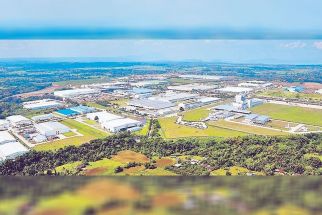ASEAN+3 region seen to moderate growth this year
MANILA, Philippines — Economic growth in the ASEAN+3 region is seen to moderate to 5.4 percent in 2018 and 5.2 percent in 2019 amid faster-than-expected tightening in global financial conditions and escalation of global trade tensions due to the new US tariffs, according to a report by Singapore-based ASEAN Macroeconomic Research Office (AMRO).
During the launch of the ASEAN+3 Regional Outlook (AREO) 2018 yesterday, AMRO chief economist Hoe Ee Khor said improving external and domestic demand combined with steady inflation would enable the 10-country bloc to weather external pressures.
Growth in the region’s two largest economies, China and Japan, also remains robust, he said.
The 2018 and 2019 projection compares with the regional growth rate of 5.6 percent in 2017. For the Philippines, AREO 2018 retained its earlier announced growth forecast of 6.8 percent in 2018 and 6.9 percent in 2019 from 6.7 percent in 2017.
AREO assesses the regional economic outlook and financial stability in the region which includes the 10 members of the Association of Southeast Asian Nations (ASEAN) plus China, Hong Kong, Japan, and Korea.
“With improving external demand, growth in the region is expected to be sustained at 5.4 percent for 2018 and 5.2 percent for 2019,” Khor said in a briefing yesterday. “However, in view of the risks of tightening global financial conditions and trade protectionism, it would be prudent for policymakers to prioritize financial stability over the economic growth objective.”
Khor said policymakers in the region should continue to build policy space, particularly in monetary policy, in anticipation of tighter global financial conditions.
“The US Fed has already started its normalization policy. We expect two more rate hikes this year,” he said.
The region, he said, should also be vigilant of the rising trade tension between the US and China.
“In our sense, the trade war will not benefit anyone,” he said.
“China is an integral part of the value chain in the region and it (trade war) will have a spillover effect outside the region.”
The report said US and China tend to lose 0.2 percentage point of GDP growth should a full-blown trade war erupt.
“Both China and the US would be negatively affected. In the first 12 months of the assumed shocks, the losses would be similar for both China and the US in that they would each lose around 0.2 percentage point of growth, which means that the relative impact would be larger for the US which would see growth fall by another 0.2 percentage point by the 36th month mark,” the report said.
Outside these two threats, the region is also confronted by fast changes in technology and in trade and production networks which are testing its “manufacturing for exports growth strategy.
The regional macroeconomic surveillance organization said advancements in technology is proving to be a “double-edged” sword for the region as it is giving rise to the services sector as an engine of growth and employment but at the same time, is cutting employment in the labor and capital intensive manufacturing sector.
AMRO said the region should, therefore, improve connectivity and grow a strong services sector powered by a skilled labor force.
“The ample resources and diversity in development within ASEAN+3 region are sources of strength,” said Khor. “The region should improve connectivity through investment in infrastructure with trade facilitation policies, grow a vibrant services sector, a develop a skilled labor force through labor upskilling, immigration, and education.”
- Latest
- Trending




























